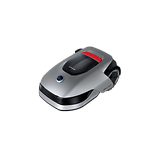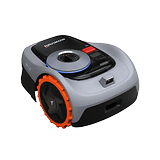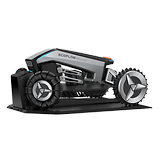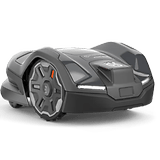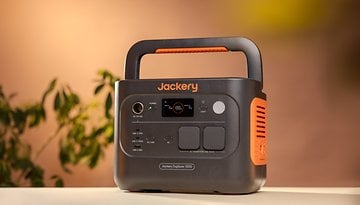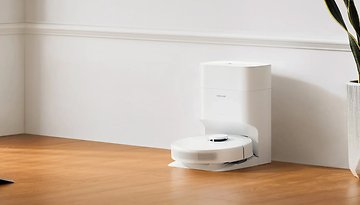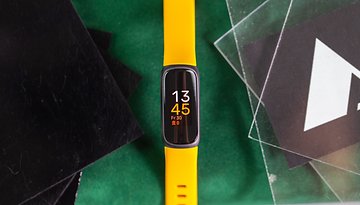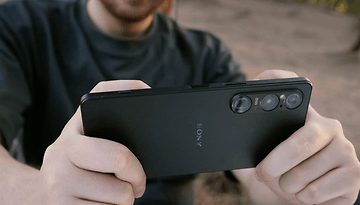The Best Robotic Mowers to Buy for Your Lawn


Read in other languages:
Which robot lawnmower to buy in 2024 for your smart home? nextpit shows you in this buying guide, the best models to buy to maintain your lawn in your connected home as well as how to choose your robot mower.
The best robot mowers to buy in 2024
Dreame A1: Editor's choice
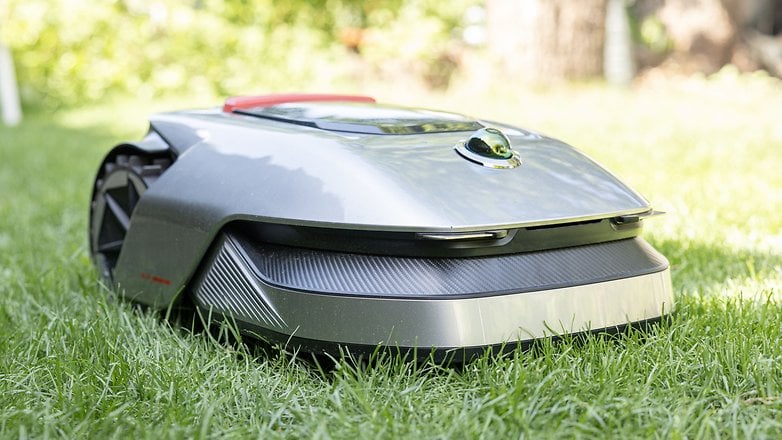
The Dreame A1 is our current recommendation for a lawnmower. It's a top-of-the-range robotic mower with LiDAR navigation. It can mow areas of up to 2000 m², even on 45% slopes. The Dreame A1 uses the same navigation technology as the brand's robot vacuum cleaners. This means it can move efficiently around the garden.
The Dreame A1 is elegant, with a gray design reminiscent of old MacBooks. Installation is quick and easy, requiring no perimeter wires or beacons scattered around the garden, and the A1 is configured via a dedicated app. Among other things, you can track the robot's position and the area already mowed in real-time. You can also define mowing plans and adjust settings according to the weather.
The Dreame A1 ensures a clean, even cut, even on the most complex terrain. Its compact, sturdy design makes it suitable for all types of gardens. It guarantees optimum coverage. Its long battery life makes it ideal for large spaces.
The Dreame A1 is IPX6 certified, which means it can be easily rinsed with water. It is equipped with a mobile brush on its charging station for cleaning the camera lens.
However, the Dreame A1 has the shortcoming of not being able to mow right up to the edge of the lawn, despite Dreame's promises.
Ecovacs Goat G1-800: the most practical robotic lawnmower to date
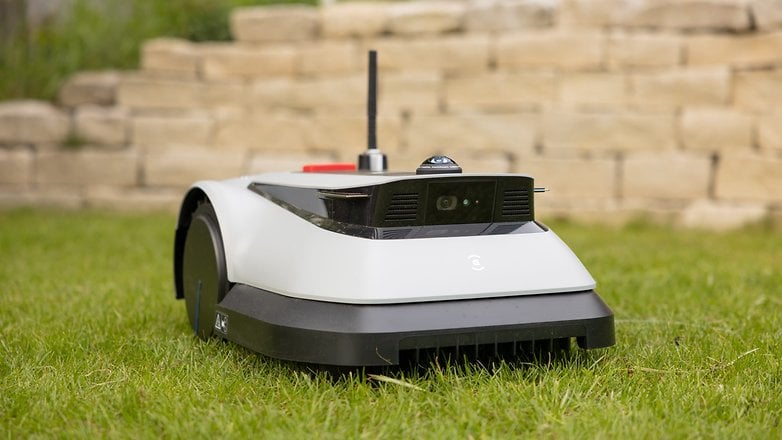
Read our full Ecovacs Goat G1-800 review to find out more
The Goat G1-800 is the new generation of Ecovacs robot mowers without boundary cables. This connected robot mower can mow up to 800 m² of lawn, on slopes of up to 45°, and is easy to install using navigation beacons.
In our test, the Goat G1-800 stood out for its good mowing quality and connected features. Obstacle detection works perfectly thanks to 3D scanning: There's a virtual sensor and a ToF sensor. The robot mower is also equipped with a rain sensor that stops mowing in bad weather.
The Ecovacs Home application offers numerous options. You can program time slots for mowing. It is also possible to use the patrol function and adjust the direction of mowing. You can also monitor the position of the robot mower or the area of lawn already mowed. You can also take photos or videos via the camera.
We couldn't find any major weaknesses with this robot mower, apart from the fact that it's rather noisy when running. The Goat G1-800 is a good option for those looking for a truly connected robotic lawnmower.
Good
- Good mowing result
- Impressive range of functions in the app
- Rain sensor incorporated
- Flawless navigation and obstacle detection
Bad
- Quite loud when moving around
- Navigation beacons design is a matter of personal preference

Segway Navimow i105: Best value for money
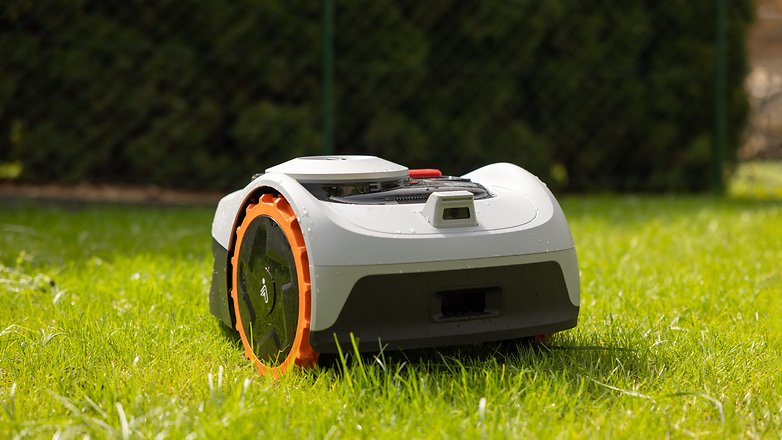
The Segway Navimow i105 is a compact robot mower that operates without boundary wires thanks to GNSS-based location technology. It can mow lawns of up to 500 m².
Setting up the Navimow i105 can be a little complex, but the app supplied guides you through the process step by step. The Navimow app lets you control and maintain the robotic mower. But it lacks certain features. You can divide your garden into zones, create mowing schedules, and set no-go zones, but there are few setting options available.
Once installed, the robot mower is capable of mowing your lawn efficiently and pleasantly quietly, with a display showing battery level and selected cutting height. The robot mower is protected against dust and water with IP66 certification, and the docking station features an indicator light to show the status of the robot mower and the satellite signal.
However, you'll have to contend with imperfect obstacle detection due to the absence of an integrated rain sensor. Also, the station and antenna must have a clear view of the sky for the robot to work properly. The Segway Navimow i105 is priced at 999 euros, giving it very good value for money.
Ecoflow Blade: the 2-in-1 robotic lawnmower

Read our first Ecoflow Blade hands-on to find out more
The EcoFlow Blade is a futuristic robotic lawnmower with built-in GPS and a positioning mast for orientation, doing away with the unappreciated boundary wire. As an option, the Ecoflow Blade can be fitted with a sweeping attachment to collect fallen leaves, and that's what makes all the difference.
Indeed, in addition to its good mowing performance even on tall grass, the Blade is capable of collecting leaves and the like in your garden. Set-up is extremely quick and the area to be mowed can be easily modified in the event of garden rearrangement. As far as functionality and programming are concerned, the Ecoflow Blade offers the usual possibilities of robotic mowers.
On the other hand, the Ecoflow Blade requires a clear view of the sky for GPS, costs at least $2,700, and is relatively noisy when mowing.
Good
- Futuristic design and compact docking station
- Good mowing performance even when the grass is tall
- Very simple and fast setup
Bad
- Needs a clear view of the sky for accurate GPS location
- Expensive
- Relatively loud when mowing
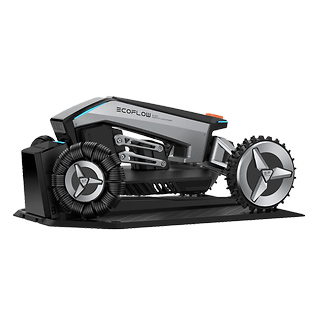
Buying advice: What should you look for in a robotic lawnmower in 2024?
Despite certain similarities with robot vacuum cleaners, there are a number of special features to bear in mind when choosing a robotic lawnmower, not least the fact that it works outdoors and has sharp blades. In any case, it's a good idea to check the requirements of your home or garden before you buy.
Robot mower with or without boundary wire: which to choose?
Basically, there are two categories of robot mowers: those with boundary wires and those without. This choice has both practical and financial consequences:
- Robotic mowers with boundary wire are complex to install. You'll need to lay a wire either on the lawn, or just below it, and possibly pull a second conductive wire. This is time-consuming and inflexible. If you enlarge your lawn by removing a flowerbed, for example, you'll have to lay the wire again. On the other hand, robot mowers costing less than 1,000 euros offer a wide choice.
- Robotic mowers without boundary cables generally use cameras, GPS or beacons, or a combination of both, to find their way around the garden. Set-up is straightforward and extending the mowing area takes just a few minutes, but robotic mowers with boundary wire are much more expensive. You'll find hardly any on the market for under 1,000 euros.
Mowing area and robot mower configuration
Before buying a robotic lawnmower, you need to know where you're going to use it. It's important to consider not only the maximum recommended surface area for the device, but also where it will be installed.
Robotic mowers generally require careful configuration, for example to define a boundary zone in which the device will operate. The boundary is often defined by the installation of a boundary wire, which can also be used to go around obstacles, swimming pools, flower beds, gravel paths, holes, bumps and slopes.
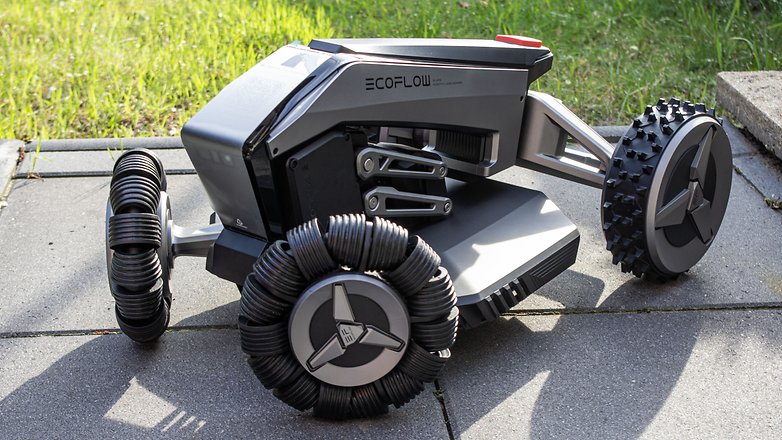
The most expensive models even offer the option of having the wiring done by a technician. Before using the mower for the first time, you should also mow the grass, as the robot models may not be able to cut tall grass. You'll have to do it yourself at least once.
Maximum slope supported by a robotic mower
The maximum slope (or gradient) that the robot mower can climb is a restriction that may concern some buyers. If your garden has slopes, the robot may not be able to climb them safely. That's why you should find out how steep the slope is before you buy. Slopes can be bypassed with a boundary wire, but you'll have to do it yourself.
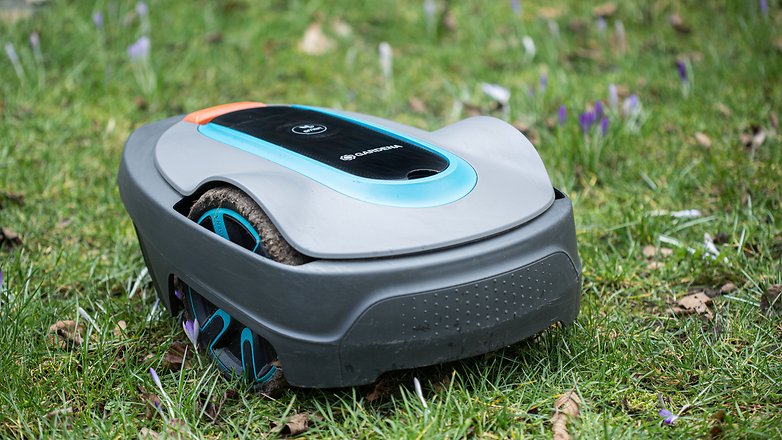
The autonomy of a robotic lawnmower
If you don't have an extremely large garden to mow, the indicated battery life should be sufficient for regular use. However, it's worth checking that the limits set and the location of the charging station allow the robot to mow properly and return to its docking station.
For example, narrow corridors may restrict the robot's movements. It is therefore advisable to consult your robot's operating instructions for the minimum widths to be respected when setting limits.
Robot mower safety features
When used outdoors, a robotic lawnmower is also exposed to the risk of theft. That's why many models feature anti-theft functions such as a PIN code, remote locking, and even an alarm that goes off as soon as the robot is outside the defined area.
Some more expensive models can even be equipped with an optional GPS tracker, connected to mobile networks, to locate and lock the device. The Goat G1-800, for example, integrates GPS directly.
Connected functions on most robotic mowers include collision sensors that not only help avoid collisions with pets and obstacles but also lift sensors that help prevent accidents when someone lifts the robot.
After all, rotating blades can be dangerous. Some robots also offer safety features to protect pets, for example via object detection using a built-in camera, or via a recommendation in the app about pet-friendly mowing times (not at night!).
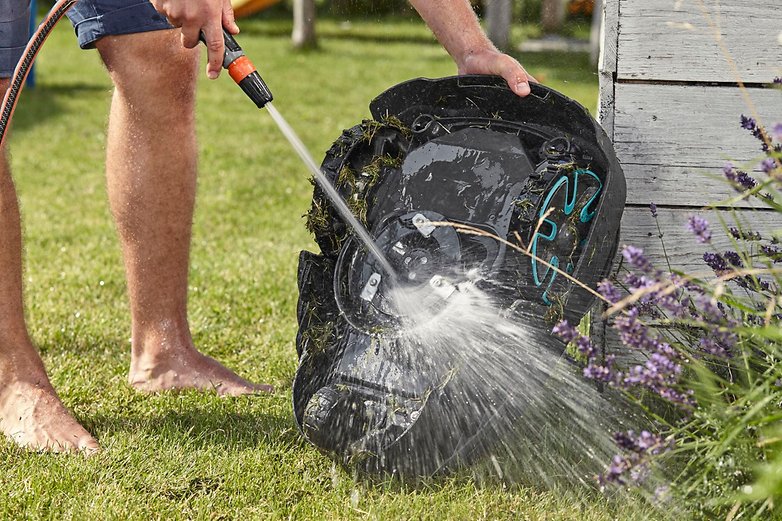
Robot mower connectivity and connected functions
Given that a robotic lawnmower doesn't need to be configured daily, integration into a Smart Home ecosystem isn't that common, especially in affordable models. At best, there are a few security-related functions (such as anti-theft) and integration into the manufacturer's companion app. Compatibility with Alexa and others is rather exceptional.
Robotic lawnmower accessories
When you buy a robotic lawnmower, you generally receive the robot, a charging station, and the accessories you need to operate it, such as the boundary wire or RTK station(s). However, there are other items that can make life easier for you and your robot lawnmower.
- A garage for your robot mower: Perhaps the most popular and sensible investment is a garage for your robot mower, which protects your self-propelled mower from rain and other elements. What's more, with the right garage, your garden will look much tidier. Don't forget that some robotic mowers are equipped with a rain sensor that postpones the next mowing date depending on weather conditions. With a garage, this sensor no longer functions properly.
- An external rain sensor: For some robotic mowers, separate rain sensors are included in the manufacturer's accessories, e.g. from Gardena. This is useful if you're using a garage, as mentioned above, or if your robot mower's station is under an awning or large tree.
- Replacement blades: To cut the grass, the vast majority of robotic mowers use a rotating disc to which several movable blades are attached. These blades resemble small razor blades and eventually become dull. You can then either sharpen them manually or replace them. A set of these blades costs between 5 and 30 dollars, depending on the robot.
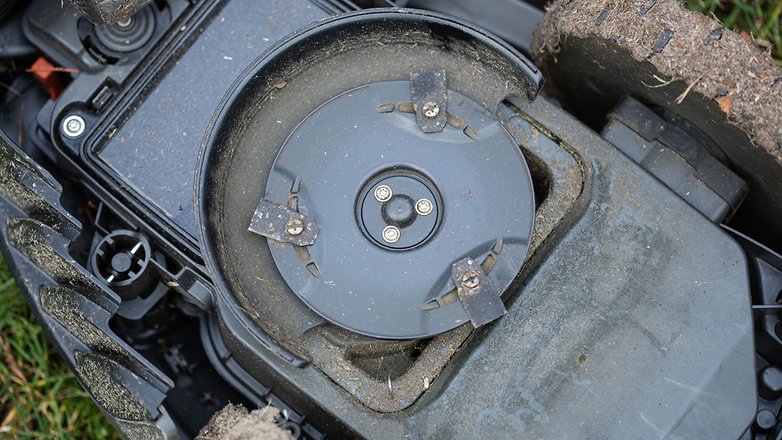
Robotic mower maintenance costs
Although robotic mowers can be operated on rainy days, some experts advise against mowing wet grass and recommend turning the unit off. In addition, most manufacturers recommend regular cleaning to remove grass clippings and dirt from the blades.
In any case, check the operating instructions to see whether the unit can be cleaned with a hose or high-pressure cleaner. In the event of high water pressure, water can also seep into the sealed housing and damage the electronics inside. Make sure that the recharging contacts are clean, to avoid longer recharging times and excessive energy consumption.
Also, check the recommended steps for keeping the robot in winter. These usually include thorough cleaning of the unit, recharging the battery, switching off, and storing the robot in a dry place. An empty battery, in particular, is critical, as the cells age very quickly.
And don't forget that there are likely to be areas that will have to be mowed without the robot, for example, those on the edges of the boundary zone, around certain obstacles, or around slopes.
That's it for our little guide to buying robot mowers. Are you interested in this product category? Are you looking forward to more "connected" functions in this field? Let us know what you think in the comments.
